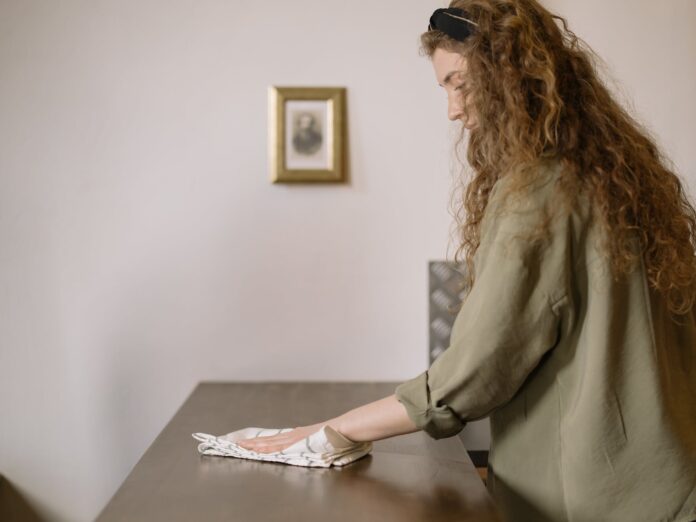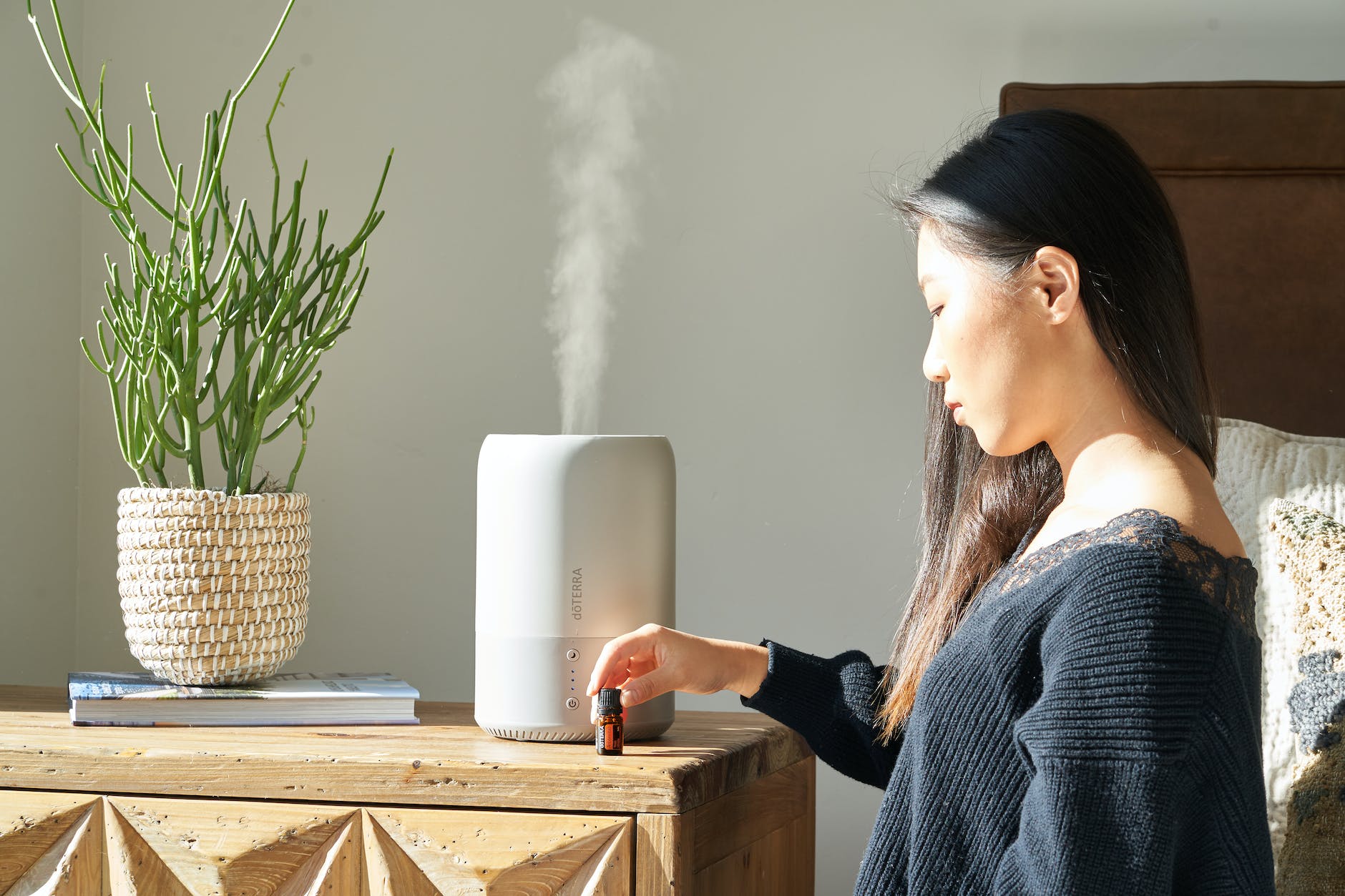

Increased indoor activity and the dry indoor air in winter can elevate the risk of illness. Safeguard against germs with these useful winter cleaning suggestions.
Cold and flu season may not be the first association with cold weather, but certain viruses thrive in the cool, dry conditions typical of fall and winter. The infographic and the accompanying article below offer tips on maintaining a clean and germ-free home throughout the winter.
How to Create an Effective Disinfecting Routine for Your Home
Maintaining a clean and germ-free home is essential for the health and well-being of you and your family. With the ongoing concerns about viruses and bacteria, it’s important to establish an effective disinfecting routine. Here are the steps to ensure your home remains a safe haven:
1. Know the Difference: Cleaning vs. Disinfecting
Understanding the difference between cleaning and disinfecting is crucial. Cleaning involves removing dirt and impurities from surfaces, whereas disinfecting requires using chemicals to kill germs. Both are important, but disinfecting will reduce the risk of infection.
2. Set a Schedule
Create a disinfecting schedule that aligns with your family’s routine. High-touch areas like doorknobs, light switches, and countertops should be disinfected daily. Bathrooms and kitchens may require more frequent attention. Less trafficked areas can be disinfected less often.
3. Choose the Right Products
Select EPA-registered disinfectants proven to eliminate pathogens of concern. Always follow the instructions on the label for safety and effectiveness. For a more natural approach, consider using alternative disinfectants like diluted household bleach or alcohol solutions with at least 70% alcohol.
4. Focus on High-Touch Surfaces
Prioritize surfaces that are touched frequently:
- Doorknobs and handles
- Light switches
- Countertops and tables
- Bathroom fixtures
- Electronics (phones, keyboards, remote controls)
Wearing gloves and ensuring good ventilation during the disinfection process will protect you from chemical exposure.
5. Don’t Forget Soft Surfaces
Soft surfaces like upholstery, carpets, and drapes can harbor germs too. While these areas can’t be cleaned with traditional disinfectants, you can launder items according to the manufacturer’s instructions using the warmest appropriate water setting and ensuring they are dried completely.
6. Handle Electronics with Care
Because electronics can be damaged by liquids, invest in wipeable covers for devices. Use alcohol-based wipes or sprays containing at least 70% alcohol to disinfect touchscreens carefully.
7. Protect Yourself
Always wear gloves when cleaning and disinfecting, and wash your hands thoroughly with soap and water for at least 20 seconds after removing the gloves. This is essential to keep yourself protected from both germs and cleaning products.
8. Keep Your Supplies Clean
Regularly wash and disinfect cleaning supplies like mops and cloths to prevent the spread of germs. If possible, use disposable products like wipes or paper towels that can be tossed after use.
9. Stay Informed
Keep up-to-date with the recommendations from health authorities as new information on disinfecting practices emerges, especially during times of increased illness.
10. Educate Your Family
Finally, educate all family members on the importance of disinfecting procedures. Good hygiene practices, including regular handwashing and avoiding touching one’s face, enhance your disinfecting efforts.
By implementing these steps, you can establish an efficient disinfecting routine, ensuring your living space is not just clean but also hygienically safe.
Managing Humidity in Your Home

Maintaining the right level of humidity in your home is crucial for comfort, health, and the preservation of your home. Here’s a more in-depth look at how to manage humidity and why it matters.
Why Humidity Matters
Health and Comfort: The right humidity level can aid in preventing the spread of airborne viruses and alleviate allergy symptoms. It’s also crucial for skin hydration and overall comfort.
Home Preservation: Excessive moisture can lead to mold growth, deteriorate building materials, and damage electronic devices. Conversely, too little moisture can cause wood to crack and shrink.
Optimal Humidity Levels
The ideal indoor humidity level is between 30% and 50%. During winter, the lower end of this spectrum is often recommended to prevent condensation on windows, which can occur when indoor humidity is too high for the colder external temperatures.
How to Measure and Control Humidity
- Hygrometers: These devices measure the moisture levels in the air. They’re an inexpensive way to keep tabs on your home’s environment.
- Dehumidifiers: Dehumidifiers remove excess moisture, especially helpful in basements or during humid seasons.
- Humidifiers: Conversely, if the air is too dry, particularly in winter, a humidifier can add the necessary moisture.
- Ventilation: Proper ventilation is critical, especially in areas like kitchens and bathrooms where moisture accumulates. Ensure exhaust fans are used when necessary.
- Houseplants: Some houseplants can help regulate indoor humidity by absorbing moisture through their leaves.
- Air Conditioning: Your AC not only cools your home but also reduces humidity. Regular maintenance will ensure it works efficiently.
Tips for Managing Humidity
- Address Leaks: Fix any plumbing leaks or areas where moisture seeps into your home as soon as possible.
- Sealing Windows and Doors: Ensure weather stripping is intact to prevent moisture intrusion.
- Moisture-Resistant Materials: Use paints, wallpapers, and building materials designed to resist moisture in high-humidity areas.
When to Seek Professional Help
If you’re experiencing persistent problems with humidity, it might be worth consulting with a professional. They can assess your home and recommend solutions like specialized ventilation systems or whole-house dehumidifiers.
By understanding the importance of humidity and how to control it, you can create a more comfortable, healthy, and durable living environment.
Why Regular Washing of Bedding and Linens is Essential
Keeping your bedding and linens clean is not just a matter of personal preference; it’s imperative for health and hygiene. No matter the season, washing your bedding and linens regularly offers several benefits that can enhance your well-being.
1. Eliminating Dust Mites and Allergens
Dust mites are tiny creatures that thrive in warm, humid environments like your bedding. They feed on dead skin cells and can exacerbate allergies and asthma. Regular washing in hot water can help eliminate these pests and keep allergens at bay.
2. Preventing Skin Problems
Sweat, oils, and dead skin cells accumulate on your sheets and pillowcases. This build-up can irritate your skin, leading to acne and other skin conditions. Washing your bedding regularly can prevent this accumulation and promote healthier skin.
3. Maintaining a Fresh Sleep Environment
There’s nothing quite like the feeling of slipping into fresh, clean sheets. It’s not only comforting but also helps foster a better sleeping environment. Fresh bedding can improve your sleep quality and help you wake up feeling refreshed.
4. Reducing Illnesses and Infections
Bedding can harbor bacteria and viruses, especially if you’ve been sick. Washing your sheets and pillowcases can kill germs and prevent the spread of infections.
5. Extending the Life of Your Bedding
Proper care and regular washing can extend the life of your expensive bedding and linens. Following the manufacturer’s care instructions ensures that your bedding remains in good condition, saving you money in the long run.
Best Practices for Washing Your Bedding
- Frequency: Wash your sheets and pillowcases once a week, and heavier items like comforters or duvets every 2-3 months.
- Temperature: Use hot water for cottons and some synthetics to help kill dust mites and bacteria.
- Detergents: Choose mild detergents and consider hypoallergenic options if you have sensitive skin or allergies.
- Drying: Tumble dry on low heat or air dry when possible to maintain fabric integrity.
By incorporating these practices into your routine, you will ensure that your bedroom remains a clean, hygienic, and inviting space. Remember, your bed is a sanctuary for rest and rejuvenation; keeping it clean is imperative for your health and happiness.
The Importance of Regular HVAC Filter Maintenance
Maintaining your home’s HVAC system is crucial for ensuring efficient operation, prolonging the life of the system, and promoting healthy air quality indoors. One of the most straightforward yet often overlooked aspects of HVAC maintenance is the regular checking and changing of filters. Let’s delve deeper into why this is so essential.
Improved Air Quality
The air inside our homes can be laden with dust, pollen, pet dander, and various other particulates. HVAC filters trap these contaminants, preventing them from recirculating through your living spaces. Regularly replacing or cleaning your HVAC filters guarantees that the air you breathe is clean, which is particularly beneficial for those with allergies or respiratory issues.
Enhanced System Efficiency
Dirty or clogged filters force your HVAC system to work harder to circulate air. By keeping your filters clean, you ensure that your system runs more efficiently, which not only saves energy but also reduces your utility bills. An efficiently running system also provides more consistent heating and cooling, enhancing overall comfort.
Extended HVAC Lifespan
HVAC systems are a significant investment for any homeowner. Clogged filters can lead to overheating in the system and increase wear and tear on its components. By changing your filters regularly, you reduce the risk of costly breakdowns and extend the lifespan of your HVAC unit.
How Often Should You Check?
The frequency at which you should check and change your HVAC filters can depend on several factors, including the type of filter you’re using, the quality of indoor air, whether you have pets, and the number of occupants in your home. In general, you should inspect your filters every 30 days and consider changing them every 90 days. However, if you have pets or someone in your household has allergies, you may need to change the filters more often.
Choosing the Right Filter
Not all filters are created equal. They come in various sizes and types, such as fiberglass, pleated, or electrostatic, and with different Minimum Efficiency Reporting Value (MERV) ratings. Higher MERV ratings indicate finer filtration, but they can also restrict airflow. It’s important to choose a filter that fits your system and addresses your specific air quality needs.
Conclusion
Regularly checking and changing your HVAC filters is a small task that can have a significant impact on your health, comfort, and wallet. Don’t overlook this simple aspect of home maintenance – it’s a clear win for you and your HVAC system.
